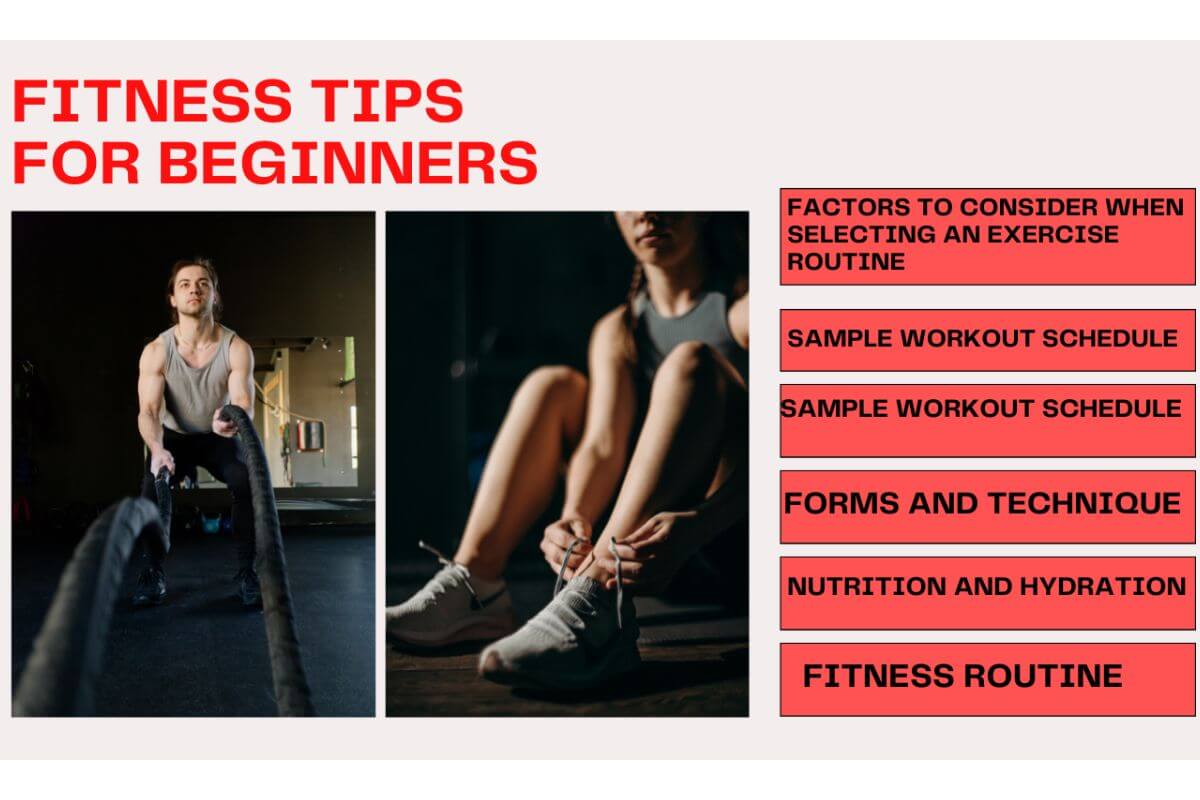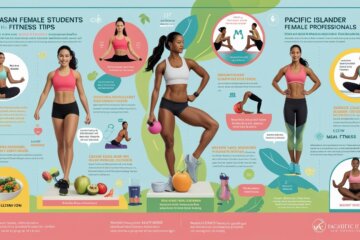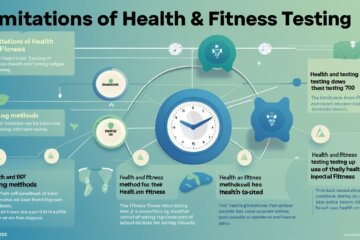Before beginning a fitness program, consider your current health status and set clear, achievable goals. Consult a healthcare professional for personalized advice.
Starting a fitness program can be both exciting and challenging. Assessing your current health status helps identify any limitations or specific needs. Setting clear, achievable goals keeps you motivated and focused. Understanding your body’s capabilities ensures a safe and effective workout plan.
Consulting with a healthcare professional provides personalized advice tailored to your needs. This initial evaluation is crucial for long-term success and avoiding injuries. Proper planning and preparation pave the way for a sustainable and enjoyable fitness journey. Embrace the process and stay committed to your health and wellness goals.
Setting Achievable Goals
Starting a fitness program can be exciting. But without clear and achievable goals, it can be easy to lose direction. Setting achievable goals helps you stay motivated and track your progress effectively. Here we will explore how to set these goals by identifying your fitness objectives and creating S.M.A.R.T goals.
Identifying Your Fitness Objectives
Before diving into a fitness routine, you need to know what you want to achieve. Do you want to lose weight, build muscle, or improve your stamina? Understanding your objectives will help you design a suitable program. Here are some common fitness objectives:
- Weight Loss
- Muscle Gain
- Improving Endurance
- Enhancing Flexibility
- Boosting Overall Health
Write down your main goals. This way, you can refer back to them and stay on track. Knowing your objectives also helps in tailoring your workouts to meet these specific goals.
Creating S.m.a.r.t Goals
Once you have identified your fitness objectives, the next step is to create S.M.A.R.T goals. This stands for Specific, Measurable, Achievable, Relevant, and Time-bound. Let’s break it down:
| Element | Description | Example |
|---|---|---|
| Specific | Clearly define your goal. | Lose 10 pounds |
| Measurable | Make sure you can track your progress. | Weigh yourself weekly |
| Achievable | Ensure your goal is realistic. | Lose 1-2 pounds per week |
| Relevant | Choose a goal that matters to you. | Fit into your favorite jeans |
| Time-bound | Set a deadline for your goal. | Achieve in 3 months |
By creating S.M.A.R.T goals, you can make your fitness journey more organized and attainable. Break down your main goal into smaller, manageable steps. This way, you can easily track your progress and stay motivated.
:max_bytes(150000):strip_icc()/retirement-planning.asp-FINAL-ed21279a08874c54a3a0f4858866e0b6.png)
Credit: www.investopedia.com
Choosing The Right Workout Plan
Choosing the right workout plan is crucial for achieving your fitness goals. A well-structured plan can keep you motivated and on track. Here, we will explore the key considerations for selecting the ideal workout plan.
Assessing Your Fitness Level
Before starting any fitness program, it’s important to assess your current fitness level. Understanding where you stand helps in setting realistic goals and tracking progress.
You can perform a few basic tests to gauge your fitness:
- Check your resting heart rate.
- Measure your body composition.
- Assess your flexibility.
- Test your muscular strength and endurance.
Knowing these metrics will help you choose exercises that match your abilities. This will also minimize the risk of injury.
Balancing Cardio And Strength Training
A balanced workout plan should include both cardio and strength training. Each type offers unique benefits that contribute to overall fitness.
Cardio exercises improve heart health and burn calories. Examples include:
- Running
- Swimming
- Cycling
- Jumping rope
Strength training helps build muscle and increase metabolism. Common strength exercises are:
- Weight lifting
- Bodyweight exercises (push-ups, squats)
- Resistance band workouts
Combining both types of exercises ensures a well-rounded fitness routine. This approach helps you achieve a balanced, healthy body.
Nutrition For Optimal Performance
Starting a fitness program is an exciting journey. Ensuring your nutrition is optimized is crucial for success. The right diet fuels your workouts and aids in recovery. This section will explore the essentials of a balanced diet, supplements, and hydration.
Essentials Of A Balanced Diet
A balanced diet is the foundation of any fitness program. It provides the energy and nutrients your body needs to perform at its best. Focus on incorporating a variety of food groups in your meals.
- Carbohydrates: Your primary source of energy. Include whole grains, fruits, and vegetables.
- Proteins: Essential for muscle repair and growth. Good sources include lean meats, beans, and nuts.
- Fats: Necessary for hormone production and energy. Opt for healthy fats like avocados, nuts, and olive oil.
- Vitamins and Minerals: Important for overall health. Ensure you eat a variety of colorful fruits and vegetables.
Supplements And Hydration
While a balanced diet is crucial, supplements can help fill in nutritional gaps. Hydration is equally important for optimal performance and recovery.
| Supplement | Benefit |
|---|---|
| Protein Powder | Helps in muscle recovery and growth |
| Multivitamins | Ensures you get essential vitamins and minerals |
| Creatine | Boosts strength and performance |
- Drink water before, during, and after workouts.
- Aim for at least 8 glasses of water a day.
- Consider electrolyte drinks for intense workouts.
Proper nutrition fuels your fitness journey, leading to better performance and recovery. Ensure your diet is balanced, consider supplements, and stay hydrated for optimal results.

Credit: www.onepeloton.com
The Role Of Consistency
Starting a fitness program is exciting. But, consistency is key. Without it, progress stalls. People often quit too soon. Staying consistent ensures long-term success.
Building A Routine
Creating a routine is essential. Your body thrives on regularity. Here are some tips to build a solid routine:
- Set specific goals: Clear objectives guide your actions.
- Schedule workouts: Treat them like important meetings.
- Start small: Gradual increases prevent burnout.
- Track progress: Monitoring helps stay motivated.
Consistency in your routine helps you make fitness a habit. Habits form through repetition.
Overcoming Plateaus And Setbacks
Everyone faces plateaus and setbacks. They are part of the journey. Here are ways to overcome them:
- Change your routine: New exercises challenge your body.
- Stay positive: Keep a positive mindset.
- Seek support: Friends and trainers can help.
- Rest adequately: Recovery is crucial for progress.
Setbacks are temporary. Consistency helps you push through. Each small step counts. Keep moving forward.
Tracking Progress Effectively
Embarking on a fitness journey is exciting. But, tracking your progress is crucial to stay motivated and see real results. This section will explore how to track progress effectively. We’ll cover the importance of keeping a fitness journal and measuring success beyond the scale.
Keeping A Fitness Journal
A fitness journal helps you monitor your workouts and achievements. It allows you to record your daily exercises, sets, reps, and weights. Writing down your workouts makes it easier to see your improvement over time.
Your journal can also track your diet and mood. This helps you understand how nutrition and emotions affect your performance. Consistency is key. Make entries every day to ensure accurate tracking.
| Day | Exercise | Sets | Reps | Weight |
|---|---|---|---|---|
| Monday | Squats | 3 | 12 | 50 lbs |
| Tuesday | Bench Press | 3 | 10 | 40 lbs |
Measuring Success Beyond The Scale
Success in fitness isn’t just about losing weight. It’s also about feeling stronger, healthier, and more energized. Consider other ways to measure your progress. For example, track your endurance, flexibility, and strength.
Use a tape measure to check your body measurements. Track improvements in your running time or the number of push-ups you can do. These indicators can show progress even if the scale doesn’t move.
- Endurance: Track your running distance and speed.
- Flexibility: Note how far you can stretch.
- Strength: Record the weights you lift.
Remember, fitness is a journey. Celebrate small victories and stay committed to your goals. Tracking progress effectively helps you stay motivated and see real improvements.
Incorporating Recovery Strategies
Starting a fitness program is exciting. But, it’s crucial to incorporate recovery strategies. These strategies help your body heal and get stronger. This section covers the key aspects of recovery.
Importance Of Rest Days
Rest days are essential. Your muscles need time to recover. Without rest, you risk injury and burnout. Rest days allow your body to repair and grow. You will feel more energized for your next workout.
Active Recovery And Mobility Work
Active recovery involves light exercises. These exercises keep your body moving without straining it. Activities like walking, swimming, or yoga are excellent choices.
Mobility work is also important. It helps maintain and improve your range of motion. Stretching and foam rolling can be part of your mobility routine. They help reduce muscle stiffness and improve flexibility.
Investing In Proper Gear
Starting a fitness program requires more than just determination. Investing in the right gear is crucial for comfort, safety, and performance. The correct apparel and equipment can make a significant difference in your fitness journey. Below are important considerations when investing in proper gear.
Selecting The Right Apparel
Choosing the right apparel is essential for any fitness program. Comfortable and breathable clothing will help you move freely. Look for fabrics that wick away sweat to keep you dry.
Proper footwear is critical. Shoes should provide adequate support and cushioning. Different activities may require specific types of shoes. For example, running shoes differ from cross-training shoes.
Layering is important for outdoor activities. Wear moisture-wicking base layers and insulating middle layers. Top it off with a weather-resistant outer layer for protection.
Choosing Equipment For Home Workouts
Home workouts require specific equipment to be effective. Invest in a good quality mat for floor exercises and stretching. Mats provide cushioning and support for your joints.
Free weights like dumbbells or kettlebells are versatile. They can be used for a variety of strength training exercises. Choose weights that match your current fitness level.
Resistance bands are an excellent addition. They offer a range of resistance levels and are portable. Great for strength training and flexibility exercises.
A stability ball can enhance core workouts. It also improves balance and coordination. Choose a ball that matches your height for the best results.
Use the table below to find essential home workout equipment:
| Equipment | Purpose |
|---|---|
| Mat | Floor exercises and stretching |
| Free Weights | Strength training |
| Resistance Bands | Strength and flexibility exercises |
| Stability Ball | Core workouts and balance |
Finding Motivation And Support
Starting a fitness program can be challenging. Finding the right motivation and support is crucial for success. Motivation keeps you moving forward. Support helps you stay committed. Let’s explore ways to find both.
Building A Support Network
A strong support network is vital. This can include friends, family, or even online communities. Surround yourself with people who encourage your goals. Join fitness groups or clubs. Social media can be a great tool for finding support. Share your progress and challenges. Positive feedback can boost your motivation.
Staying Motivated With Varied Workouts
Variety in workouts keeps things interesting. Mix different types of exercises such as cardio, strength training, and flexibility exercises. Set small, achievable goals. This helps maintain your interest and prevents boredom. Track your progress to see how far you’ve come. Reward yourself for reaching milestones. This keeps your enthusiasm high.
Here’s a simple table to help you plan:
| Day | Workout Type | Duration |
|---|---|---|
| Monday | Cardio | 30 minutes |
| Wednesday | Strength Training | 45 minutes |
| Friday | Flexibility | 20 minutes |
Consistency is key. Stay motivated by changing your routine often. Find support from friends and community. This will make your fitness journey enjoyable and successful.
Understanding The Mental Aspect
Starting a fitness program is not just about physical effort. The mental aspect is equally important. Your mind plays a crucial role in your fitness journey. Understanding and preparing your mind can help you achieve your goals more effectively.
Mindfulness And Fitness
Mindfulness means being fully present and aware of your thoughts and actions. Incorporating mindfulness into your fitness routine can enhance your performance. It helps you stay focused during workouts and prevents distractions.
Mindfulness can also reduce stress and improve mental clarity. This allows you to enjoy your fitness journey more. Practice mindful breathing and meditation before your workouts. This can set a positive tone for the session.
Keep a fitness journal to track your progress and emotions. This practice can help you understand your mental state better and identify areas for improvement.
Coping With Mental Barriers
Mental barriers can hinder your progress. These barriers include fear, lack of motivation, and self-doubt. It’s essential to recognize these barriers and find ways to cope with them.
Set realistic and achievable goals. Breaking down your goals into smaller steps can make them seem more attainable. Celebrate each milestone to keep yourself motivated.
Surround yourself with supportive people. Sharing your fitness journey with friends or joining a fitness community can provide encouragement and accountability. Positive reinforcement from others can boost your confidence.
Visualize your success. Spend a few minutes each day imagining yourself achieving your fitness goals. Visualization can help build self-belief and reduce anxiety.
Seek professional help if needed. A mental health professional can provide strategies to overcome mental barriers. This support can be invaluable for maintaining a positive mindset.
Safety First: Injury Prevention
Starting a fitness program can be exciting. But, prioritizing safety is crucial to prevent injuries. Understanding key safety practices ensures a successful and enjoyable fitness journey.
Warm-up And Cool-down Routines
Always begin with a warm-up. This prepares your muscles and increases blood flow. A good warm-up can reduce the risk of strains and sprains.
- Start with 5-10 minutes of light cardio.
- Include dynamic stretches like leg swings and arm circles.
After your workout, cool down. Cooling down helps your body return to normal. It can also prevent muscle stiffness.
- Spend 5-10 minutes on gentle stretching.
- Focus on the muscles you used during your workout.
Listening To Your Body
Your body sends signals when it needs rest. It’s important to listen to these signals. Ignoring them can lead to serious injuries.
- Know the difference between good pain and bad pain. Good pain is muscle soreness. Bad pain is sharp or sudden.
- Take rest days. Rest days allow your muscles to recover and grow.
- Stay hydrated. Drink water before, during, and after your workout.
If something doesn’t feel right, stop. Consult a professional if you are unsure. Prioritizing safety ensures long-term success in your fitness journey.

Credit: www.healthline.com
Frequently Asked Questions
What Is The Most Important Step In Beginning A Fitness Program?
The most important step in beginning a fitness program is setting clear, achievable goals. This provides direction and motivation.
What Are 3 Factors You Should Consider When Making A Fitness Program?
Consider your fitness goals, current fitness level, and available resources when making a fitness program.
Which Of The Following Is Important Before Starting An Exercise Program?
Before starting an exercise program, consult a doctor, set realistic goals, choose suitable exercises, warm up, and stay hydrated.
What Should You Consider In Selecting An Exercise For Your Fitness Program?
Consider your fitness goals, personal interests, current fitness level, available equipment, and time commitment when selecting exercises. Choose activities you enjoy to stay motivated. Ensure a mix of cardio, strength, and flexibility exercises for overall fitness. Consult a professional if needed.
Conclusion
Starting a fitness program requires careful planning and consideration. Prioritize your health, set realistic goals, and consult professionals. Remember to track progress and stay consistent for long-term success. By keeping these factors in mind, you can create a sustainable and effective fitness routine.
Stay motivated and enjoy the journey to a healthier you.

“As the voice behind Radiant Glow Health, we are dedicated to being your ultimate wellness and vitality companion. Our mission is to inspire and guide you on your journey to a healthier and more vibrant life. Join us as we explore holistic health practices and empower you to radiate wellness from within.”



